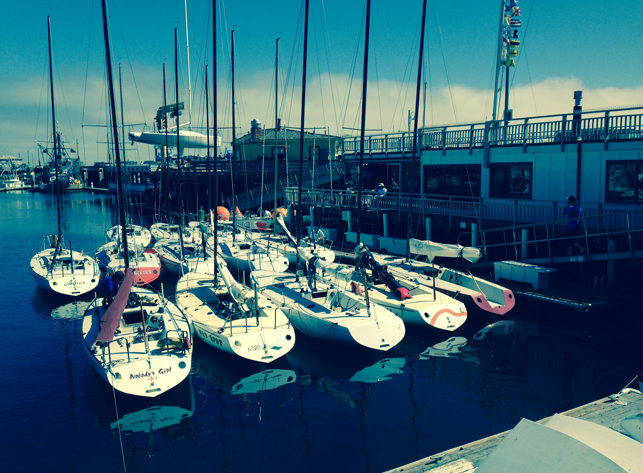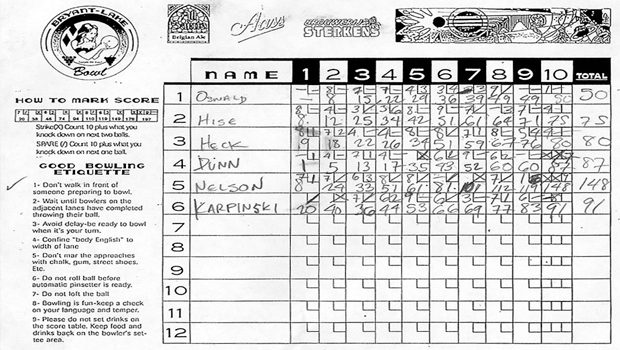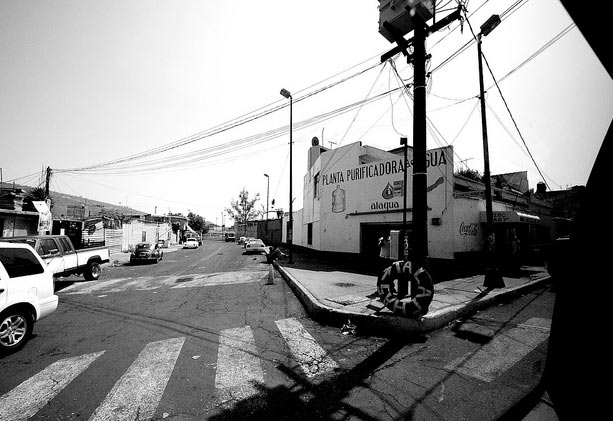As Commissioned of Carl Schumacher, Naval Architect, by Ron Moore
Adopted by Moore 24 National Association January 10, 1981
Amended: 10/86, 12/97, 12/03, 1/05, 11/06, 02/07, 11/07, 12/11, 3/14, 1/15
I. Intent of Rules
It is the intention of these rules to provide a standard by which Moore 24s can race as a one-design class and that all well-sailed boats shall have an equal chance of winning. Deck hardware and its placement shall not be restricted in order to allow skippers to tailor their boat to individual sailing styles. Exotic and potentially expensive equipment will be prohibited as specified in “II. General Clause”. It is the further intention of these rules that the racing/cruising capabilities of the Moore 24 be maintained.
II. General Clause
The Moore 24 National Association reserves the right to interpret these rules as will best provide one-design racing for the class. Anything not covered in these rules shall be subject to a ruling by the Governing Board as it becomes necessary. It is the responsibility of the owner and skipper of the yacht to check with the Governing Board before making any changes to the stock "Moore 24" as it comes from the factory. The Governing Board shall have the authority to clarify, alter, and amend the Class Rules as necessary to keep them current, provided the structure and intent of the rule is not changed (e.g. eliminating reference to IOR standards and updating to ISAF standards, fixing typographical errors).
Boat owners are required to seek and obtain approval from the Governing Board (who shall seek a written evaluation from the Technical Committee) prior to performing any modifications to the hull, deck, appendage, spars or rigging that (a) changes either the measured weight of the boat, or distribution of weight in the boat, (b) requires new penetration of either the deck or the hull of the boat, or (c) improves the performance of that boat. Any modifications, including those pre-approved modifications listed in the paragraph below, that are made without approval shall not be accepted and shall render the boat's measurement certificate invalid and she will be deemed out of compliance with Class Rules until approval for the changes is obtained from the Governing Board and a valid measurement certificate is obtained from the Class Measurer. Any approved modifications shall require a boat to be re-measured prior to being issued a new measurement certificate. The intent of this rule is to allow the Governing Board the latitude to best protect the one-design characteristics of the Moore 24. Requests for approval of modifications shall be handled on a timely basis by the Governing Board and Technical Committee, and response times shall correspond to the nature of the request, however the Governing Board, Technical Committee and Class Measurer shall be under no obligation to respond to such request in less than 15 calendar days.
Boats that benefit from some unforeseen development or an Innovation of Significance not covered in these rules may have their eligibility determined at the discretion of the Governing Board. Innovations of Significance are defined as any modifications that were not part of the stock delivery for that particular boat hull number, and any modification not approved in the Moore 24 National Association Class Rules. An Owner may seek approval for an Innovation of Significance by class vote by submitting a written proposal to the Governing Board not later than October 1st, which will then be presented to the Association for a vote at the Annual Meeting. Owners may seek temporary approval for Innovations of Significance at any time by submitting a written application to the Governing Board, which shall issue a temporary ruling which shall be valid until the matter is put to a vote at the Annual Meeting. Prior to either an Association vote or a temporary ruling by the Governing Board, the Technical Committee shall provide a written analysis of the compliance of the proposed Innovation of Significance modification with the Moore 24 National Association Class Rules. In the case of a temporary ruling by the Governing Board, both the Technical Committee’s written analysis, as well as the Governing Board’s ruling shall be posted on the class web site and circulated to the fleet via email. In the case of an Association vote, the Technical Committee’s analysis shall be posted on the class web site and included in any printed material circulated prior to the vote.
The Governing Board has accepted the following modifications as substantially in keeping with the performance of a stock “Moore 24”:
Open transom, removal of rub strips, modified tiller of any material of equal strength as original equipment, under-deck companionway hatch, floating jib leads, jib cunningham, spinnaker pole of any material, removal of toe-rail (if equipped), removal of pulpit or pushpits (if equipped), removal of stock main traveler and thwart molding, replacement of stock forward hatch (if equipped) with part of equal strength, removal of every other standard hull to deck through bolt, backing plates for chain plates.
For Shorthanded Roadmaster Series events requiring a masthead antenna to operate a VHF radio, the following modification shall be permitted:
A spectra backstay with integral coax.
III. Hull and Deck
All hulls shall be standard Moore 24s built by the Moore Sailboat Shop, except hulls covered by the Grandfather Clause below. Boats shall have an “all up” weight of not less than 2050 (two thousand fifty) pounds, including mast, boom, spinnaker pole, all standing rigging and halyards (dry to touch) - as determined using the Class scale/load cell. The boats shall be stripped of sails, safety gear, personal gear, outboard motor, etc., before weighing. Any weight, as determined by the Class Measurer(s), used to attain minimum boat weight, known as “corrector weight”, shall be permanently attached to the boat. If a battery remains aboard while weighing, it, or equivalent corrector weight of up to 40 lbs, shall be carried in the standard battery location. If greater than 40 lbs corrector weight (including battery if so equipped) is required, one half of this weight shall be attached aft of the rudder post, and the remaining half shall be attached to the underside of the deck within 10” of the stem.
Refairing (changing the shape) of the hull, except in the area of repair, is prohibited. In the case of repair, the intent of this rule is to have the boat returned to the same condition it was in prior to being damaged. Surface preparation as required to achieve a smooth surface finish for paint or gelcoat is allowed.
IV. Keel
The keel shall be standard as supplied with the boat. Any attempt to alter the foil section is prohibited.
Material: Lead
Minimum weight: 1000 (one thousand) pounds
Length/Thickness: 30” waterline above keel bottom 45-1/2” 3-5/8”
1-1/2” waterline above keel bottom 33-1/2” 3-1/8”
Tolerance +/- 1” +/- 1/4"
V. Rudder
The rudder shall be the standard as supplied with the boat, or identical to that if replacement is necessary. Any attempt to alter the rudder in any way is prohibited.
VI. Mast and Rig
The mast shall be aluminum alloy of no less than 1.4 pounds per foot and fit through a 5” diameter circle. The mast shall have one set of spreaders approximately 25” long and 13’ 8” above the deck. The top four feet of the mast may be tapered. The centerline of the backstay pin shall be 4-1/2” +/- 1/2” from the backside of the mast in the horizontal direction. The mast step and base must be fixed and shall not rotate or otherwise move while racing.
The standing rigging shall be 1x19 stainless steel wire. Wire diameter shall be 5/32” for the forestay and uppers, and 1/8’ for the backstay and lowers. Adjustment of standing rigging shall be achieved via turnbuckle only (except backstay). The intersection of the centerline of the jib stay with the forward face of the mast shall be no more than 26’ 3” (25’ 10-3/4” for SC models) nor less than 26’ 0” (25’ 7-3/4” for SC models) above the deck. The bearing point of the spinnaker halyard shall be no more than 26’ 7” (26’ 2-3/4” for SC models) nor less than 26’ 1/2” (25’ 8-1/4” for SC models) above the deck. Headfoils, twinstays, gemini foils, etc., are allowed. Halyard locks are permitted, but must be located within eight feet of the base of the mast.
There shall be a 1” wide band of contrasting color whose lower edge shall be no more than 25’ above the top of the boom. The top of the boom, when projected at right angles to the mast, shall be 2’, 8” (2’ 3-3/4” for SC models) +/- 1/2” above the deck.
VII. Boom
The boom shall be an aluminum alloy capable of passing through a 5” diameter circle when stripped of hardware. There shall be a 1” band of contrasting color whose inner edge shall be no more than 9’ 6” from the aft side of the mast.
VIII. Spinnaker Pole
The spinnaker pole length, when forced outboard in its fitting on the mast and set in the horizontal position athwart ships, measured from the centerline of the mast to the extreme outboard end of the pole shall be no more than 9’ 9”.
IX. Sails
Boats shall be raced with a maximum of seven sails on board. These sails shall consist of:
a. One main
b. Two spinnakers
c. Three jibs
d. One heavy weather jib, maximum 65% LP
It is the intent that the heavy weather jib be designed for heavy weather conditions and not as a spinnaker staysail.
Except for spinnakers, the sails carried at the first start of a multi-race event must be carried in the entire regatta.
It is the intent of these rules that sails conform to both the class rules and the various measurement rules used for handicap racing. All sails shall be measured from the junction of imaginary lines that form a sharp corner as they extend from the actual lines of the foot, roach, or luff of a sail, beyond the rounded tack, clew, or head of that sail (according to ISAF standards.)
The maximum jib LP is 14.63’ (150% of J) and it shall be made of material whose weight is no less than a recognized sailmaker’s weight of three oz. per yard. The purpose of this rule is to prohibit specialty sails such as drifters and bloopers.
Spinnakers shall conform to ISAF standards. Each shall have a maximum width of no more than 17.55’ or a midgirth of less than 8.78’. The spinnakers shall be symmetrical and the luffs shall be no longer than 26.60’. The material shall be no lighter than an actual weight of .9 oz. per sailmaker’s yard. The intent of this rule is to prohibit 1/2 oz. spinnakers.
A carried second spinnaker is intended as a “backup”, and can be flown only if the original sail is seriously damaged or lost. Skippers of boats flying a second spinnaker on any race day must be prepared to demonstrate to a member of the Governing Board proof of damage to their original spinnaker. Skippers who choose to fly a second spinnaker in accordance with the above, shall not revert to their first spinnaker within the same race or on the same race day. In a multi-day regatta, damaged spinnakers may be replaced or repaired and used again on a subsequent race day.
The headboard on the mainsail as measured from the luff of the sail including boltrope to the leech, shall be no greater than 0.5’.
The mainsail shall have four equally spaced battens of the following lengths:
Top 24” Middle (2) 38-3/4” Bottom 28-1/2”
The leech shall not project beyond a straight line between the back of the headboard and the top batten, between each batten, and between the bottom batten and the clew.
The mainsail shall have a midgirth of 6.5’ and a 3/4 girth of 3.91’ measured from the front of the headboard to the clew. Cross measurements shall be the distance from the leech measurement points to the nearest point on the fore edge of the sail including bolt rope. Points on the leech from which the cross measurements are taken shall be determined bridging any hollows in the leech with straight lines.
Sailmaker’s Specifications:
I = 26.25’ J = 9.75’ P = 25.00’
E = 9.50’ LP = 14.63’
X. Prohibitions
• Hydraulic adjustments
• Standing rigging, except backstay, adjustable while racing
• Through-deck spinnaker launchers (including drop-line systems)
• Mast bending devices such as struts, rams, or midstays
• Coring, drilling out, rebuilding, replacing materials, grinding, or relocating standard equipment in any way to improve pitching moment of inertia
• Stripping interior (including removal of forward Vberth if equipped)
• Rod rigging
• Running backstays
• Trapezes
• Removing foredeck hatch covers
• The working portion of the jib and spinnaker sheets – from the sail to the winch – shall not pass below decks at any point.
XI. Minimum Equipment
An appropriate combination of anchor, chain, and line weighing at least 14 pounds, and PFDs for the entire crew.
XII. Hiking/Safety Straps
Crew may be outside lifelines, but hiking is restricted in that no part of the skipper’s or crew’s torso may extend outside of a line drawn perpendicular to the water, bisecting the intersection of the topsides and deck, regardless of the angle of heel. Hiking straps are allowed.
XIII. Grandfather Clause
Hulls #1—5 and 10 shall be allowed to race in the National Championships so long as their sails do not exceed the normal Moore 24 sail plan and have a current measurement certificate. If any of these hulls are re-rigged, they must use the standard Moore 24 mast and rigging.
XIV. Crew Weight Limit
The total crew weight limit is 825 pounds. At every Roadmaster event, skippers shall provide the organizing authority with a crew list including the name and weight of each crewmember. This list must reflect the crew on board for each race day. Each crewmember will be weighed at Championship Regattas and the Class Measurer or his/her designee will certify each person’s weight on a scale approved by the Class Measurer.
Approved 1/1/2015
John Siegel
Class Secretary/Treasurer







